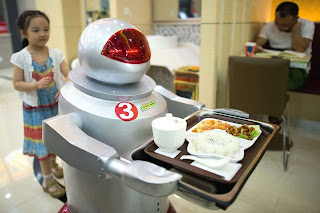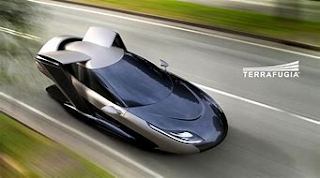Restaurant Robots

Tip for a Restaurant Robot Robots are on duty in restaurants from China to Boston. They work as chefs, cooks, waiters, hosts, even entertainers. The robots are delivering a lot of good food and entertainment value. The question is: do you have to leave them a tip?? The tip is up to you. But the point is, robotics is at a tipping point for the restaurant industry. Boston's Restaurant Robots In Boston, 4 MIT engineers and Michelin-starred Master Chef Daniel Boulud just opened a robotic restaurant. It's called Spyce and is a fast casual restaurant primarily for the lunchtime, office worker crowd. The robots prepare all the meals. The owners claim the robots cook your made-to-order meal in three minutes. The robots specialize in cooking grains and vegetables. It's an example of the growing use of robotic technology in restaurants. China's Robot Restauran t In Harbin, China 20 robots serve diners at the Robot Restaurant. They cook, wait tables and





